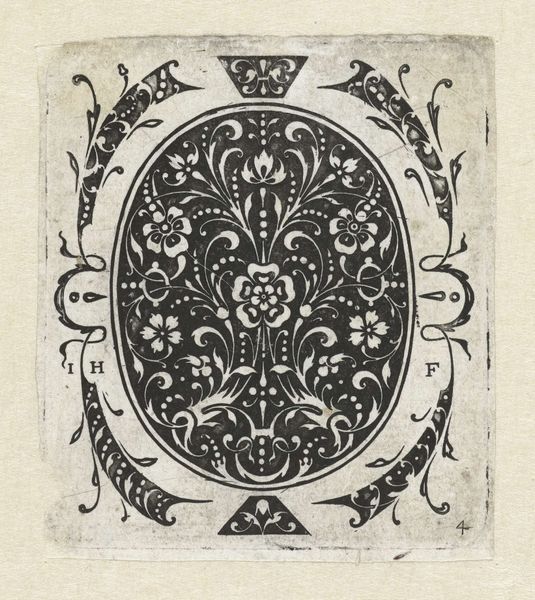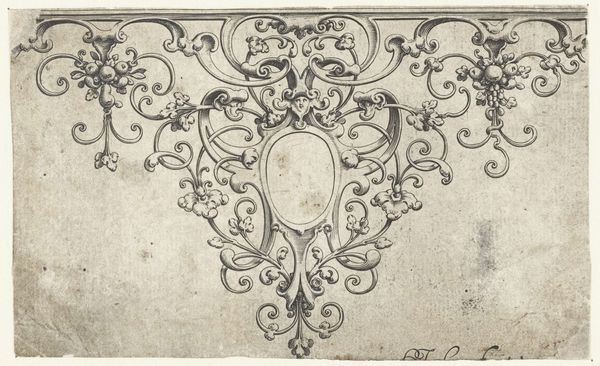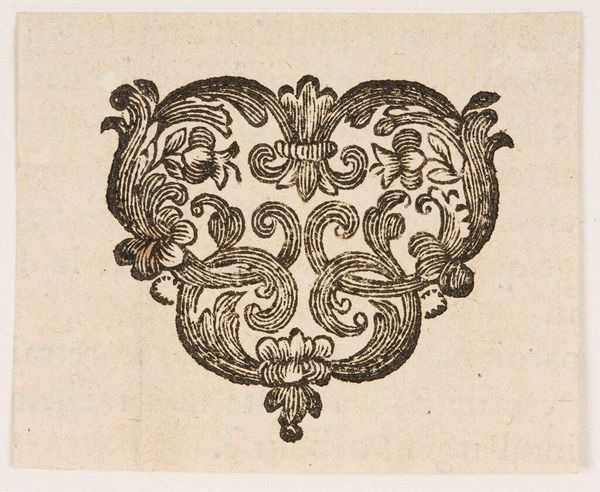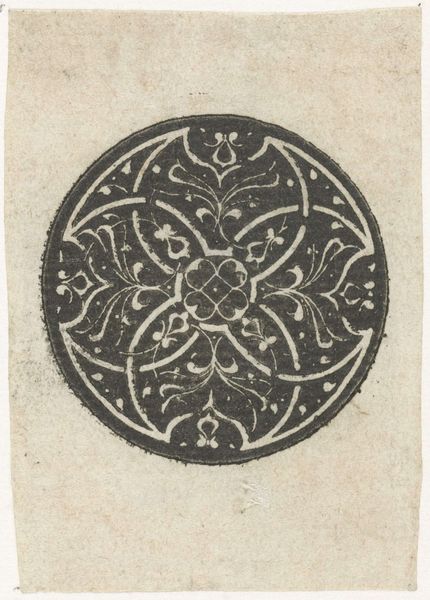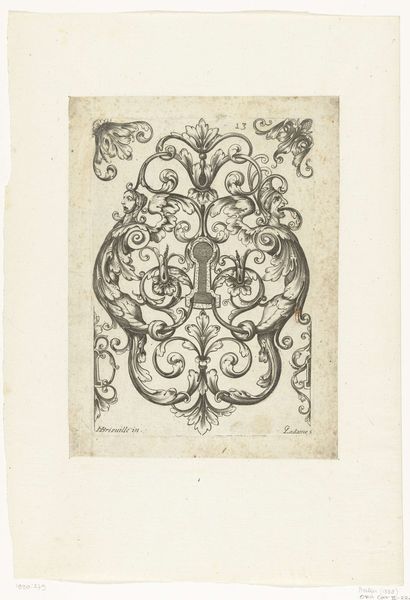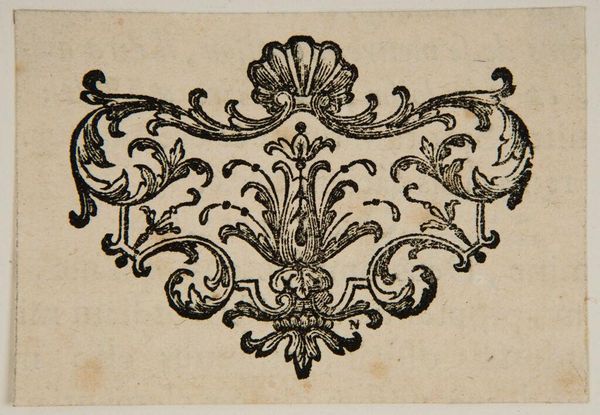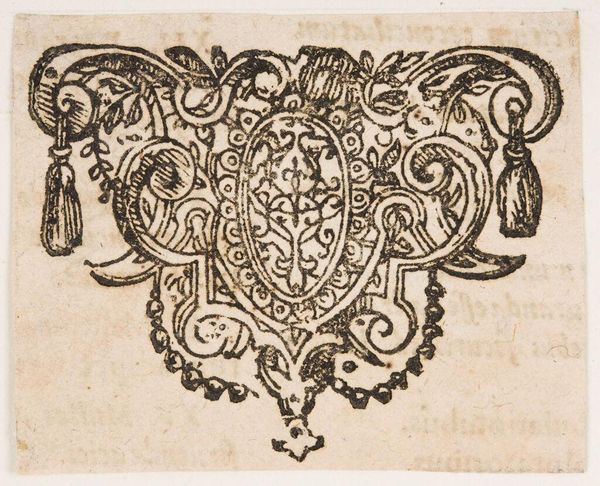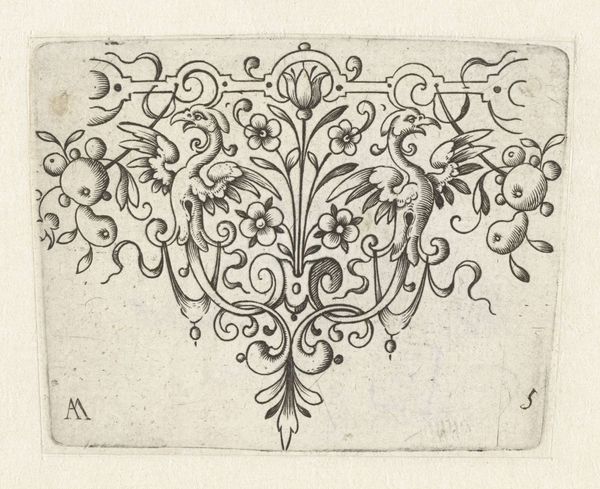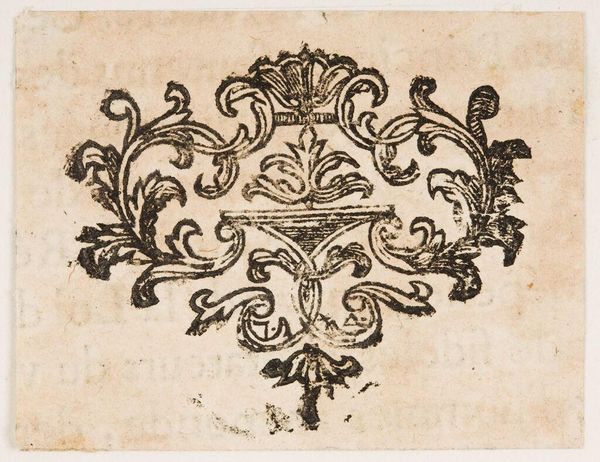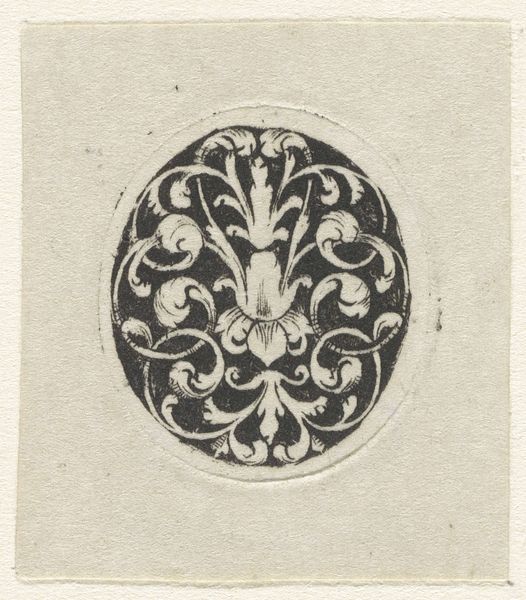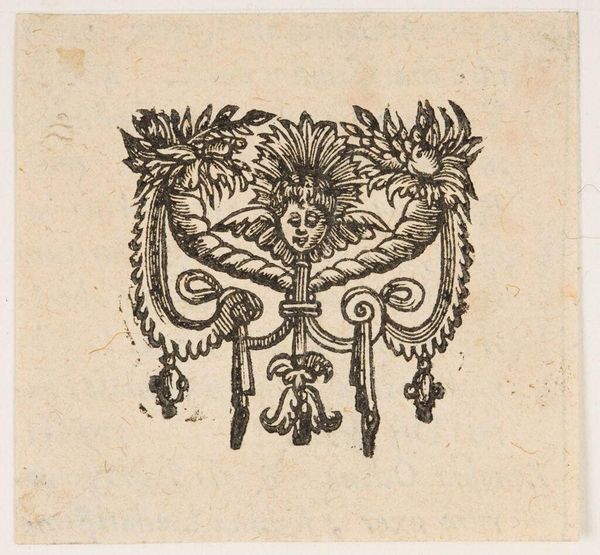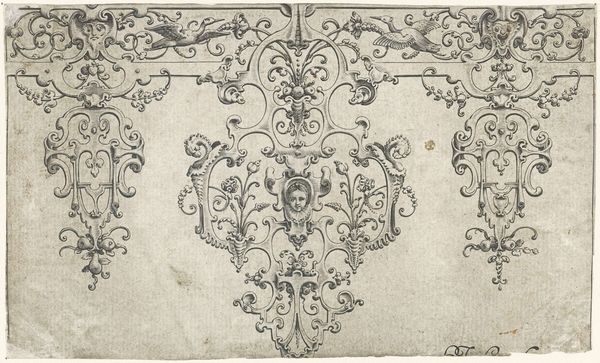
Copyright: CC0 1.0
Curator: Before us is an anonymous artwork from the Harvard Art Museums, titled "Head- or Tail-piece." It's a fascinating example of graphic design, probably intended for use in a book. Editor: It strikes me as both intricate and contained. The dense, symmetrical composition gives it a feeling of formal constraint, yet the curling, organic forms suggest a deeper, perhaps uncontrolled, energy. Curator: Exactly! Look at the deliberate use of symmetry and repetition. The mirroring of shapes creates a visual rhythm, drawing the eye towards the central axis. It speaks to a desire for order, even within the chaotic swirl of the design. Editor: The motifs, though abstract, still evoke foliage. There's a sense of natural growth, transformed into a symbolic language of flourishing and perhaps, even, transformation. It might be read as a representation of the cyclical nature of life itself. Curator: An intriguing perspective. The interplay of positive and negative space is equally compelling. See how the black ink defines the forms, while the surrounding paper allows them to breathe, creating tension and balance? Editor: It leaves me with a sense of the beauty inherent in small, often overlooked details, the quiet power of symbolism embedded in form. Curator: Indeed. It's a testament to the skill and ingenuity of the anonymous artist.
Comments
No comments
Be the first to comment and join the conversation on the ultimate creative platform.
